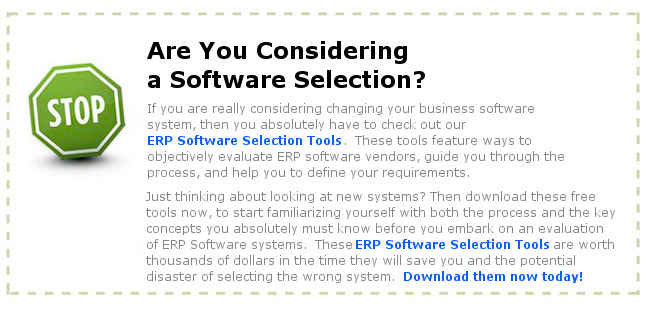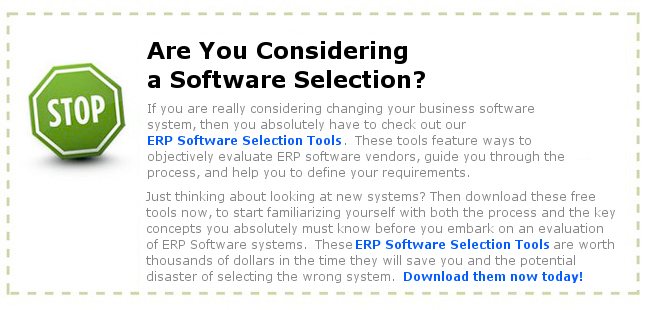A fascinating article on the design and functionality of an ERP system from a different perspective:
“… The task of IT is to begin building systems on a new foundation, using a new kind of blueprint. First, adopt the following rule: Business processes define database table relationships; database table configurations drive application components; applications drive interface development.
This hierarchy is powerful and effective, as long as you stick to it. Break away, and start redefining database tables to serve apps, or basing apps on interfaces (two long-standing standards from the old days), and your ERP framework will not bear the weight of it long. …
If your company is going ERP, then there are probably several driving forces behind the decision, possibly including: the need to increase supply chain efficiency; the need to increase customer access to products or services; the need to reduce operating costs; the need to respond more rapidly and flexibly to a changing marketplace; and the need to extract business intelligence from data over time.
All of this is fine for the decision-makers, but what does it mean to you as a developer? To achieve senior management’s objectives above, IT needs to make the following things happen:…:
Read more about ERP from a Develops point of view here.

